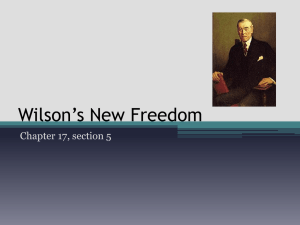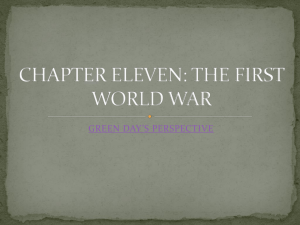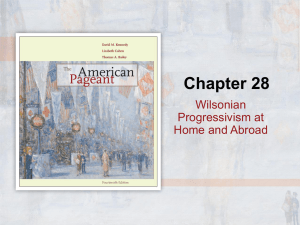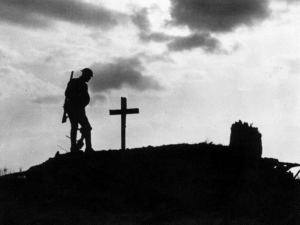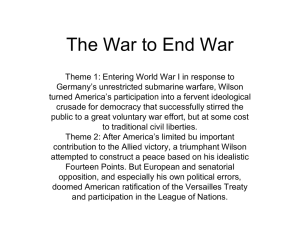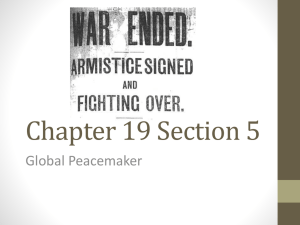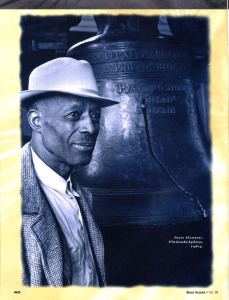The Piano Lesson 2013
advertisement
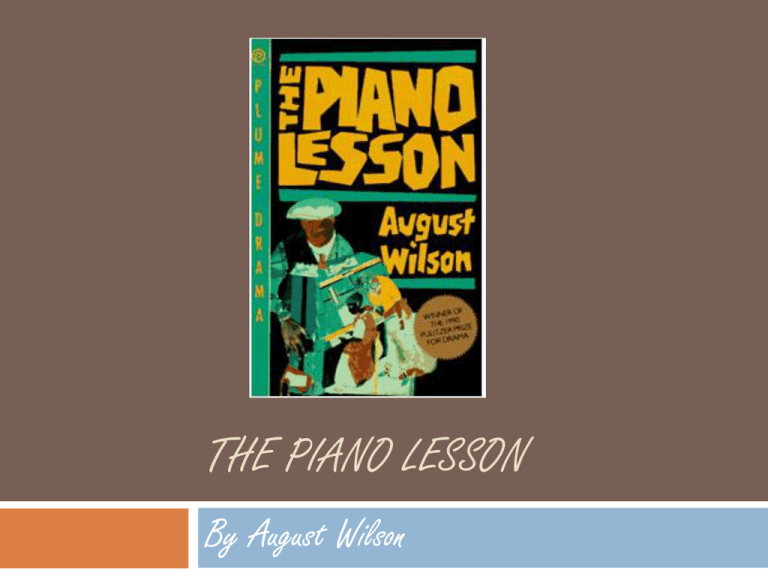
THE PIANO LESSON By August Wilson August Wilson Biography -Career only lasted 20 years -October 11, 1984 – Ma Rainey’s Black Bottom premiere at Broadway’s Court Theater -Fences (1987) and The Piano Lesson (1990) won the Pulitzer Prize; Fences also won the Tony Award for Best Play -7 New York Drama Critics’ Circle Awards for best American play. Since that award was inaugurated in 1936, only Tennessee Williams, who won it four times, has won it more than twice. August Wilson Biography Cont’d -Born Frederick August Kittel in 1945 — fourth of six children to a white father and a black mother—in Pittsburgh’s Hill District (sometimes called “a slum” but considered by many to be the cultural center of AfricanAmerican life in Pittsburgh). -Father absent through Wilson’s life “The cultural environment of my life, the forces that have shaped me, the nurturing, the learning, have all been black ideas about the world that I learned from my mother.” - Daisy Wilson Kittel (mother) strong powerful woman who believed in education. - Moved out of Hill District to Hazlewood District (predominantly white working-class) August Wilson Biography Cont’d High-school dropout (driven out by racism), but studied so much at the Carnegie Library of Pittsburgh (from age 12) that it bestowed on him its only (to date) honorary degree 1968: co-founded now-defunct Black Horizon Theater in Hill District Three wives: Constanza Romero (1994-2005) Judy Oliver (1981-1990) Brenda Burton (1969-1972) Diagnosed with liver cancer in June 2005; died October 2, 2005 (not long after the world premiere run—April/May 2005—of Wilson’s last play Radio Golf, which completed the “Century Cycle”) The Pittsburgh Cycle (a.k.a. “Century Cycle”) 1900s: Gem of the Ocean (2004) [9] 1910s: Joe Turner’s Come and Gone (1988) [3] 1920s: Ma Rainey’s Black Bottom (1984) [1] 1930s: The Piano Lesson (1990) [4] 1940s: Seven Guitars (1996) [6] 1950s: Fences (1987) [2] 1960s: Two Trains Running (1992) [5] 1970s: Jitney (2000) [7] 1980s: King Hedley II (2001) [8] 1990s: Radio Golf (2005) [10] Gem of the Ocean – 1900s Joe Turner’s Come and Gone – 1910s Ma Rainey’s Black Bottom – 1920s The Piano Lesson – 1930s Seven Guitars – 1940s Fences – 1950s Two Trains Running – 1960s Jitney – 1970s King Hedley II – 1980s Radio Golf – 1990s August Wilson Themes “to make African Americans aware and proud of their history and heritage” Slavery / Emancipation Proclamation Novelist/playwright Zora Neale Hurston / segregation Conflict between assimilation and pride in one’s uniqueness, one’s heritage August Wilson Influences -Artist: Romare Bearden -Title: The Piano Lesson (1983) -Most believe the central subject of this composition to be jazz pianist Mary Lou Williams, who spent her childhood years in Pittsburgh. -Though a New Yorker for most of his life, young Romaire Bearden traveled frequently to Pittsburgh. -About Bearden, Wilson said, "When I saw his work, it was the first time that I had seen black life presented in all its richness, and I said, 'I want to do that—I want my plays to be the equal of his canvases.'" August Wilson Influences: The Blues and Jazz Wilson on music: "I have always consciously been chasing the musicians. It's like our culture is in the music. And the writers are way behind the musicians I see. So I'm trying to close the gap.“ Most of Wilson's plays inspired by images (paintings, photos), snippets of conversation, or lyrics from blues songs Example: hearing recording of blues singer Bessie Smith (protégé of blues singer Gertrude "Ma" Rainey) inspired first play, Ma Rainey’s Black Bottom Continuity of African-American music/oral tradition from spirituals to blues to jazz to contemporary R&B, hip-hop, etc. is also part of the texture of the “Century Cycle” The Piano Lesson Themes The importance of the past to the present Oral history The desire to conform The problem of identity and the importance of the past to identity Celebrating African American culture Monologues as Revelations of Character & Theme Each pair/trio will analyze a monologue: Summarize the TEXT of the monologue What is the SUBtext of the monologue? Include analysis of symbolism where appropriate. What does the monologue reveal about character & how? Specifically, what does the monologue show of the character’s attitude toward past, present, and future? Group 1: Boy Willie (pg. 10-11) Group 2: Doaker (pg. 18-19) Group 3: Avery (pg. 24-25) Group 4: Wining Boy (pg. 41) Group 5: Doaker (pg. 42-46) Group 6: Boy Willie (pg. 51) Group 7: Berniece (pg. 52) Group 8: Wining Boy (pg. 63-64) Group 9: Lymon (pg. 78) Group 10: Boy Willie (pg. 88-94)



